Boy Wonder blunders and killer bats: Inside the Tim Burton 'Batman' you never saw
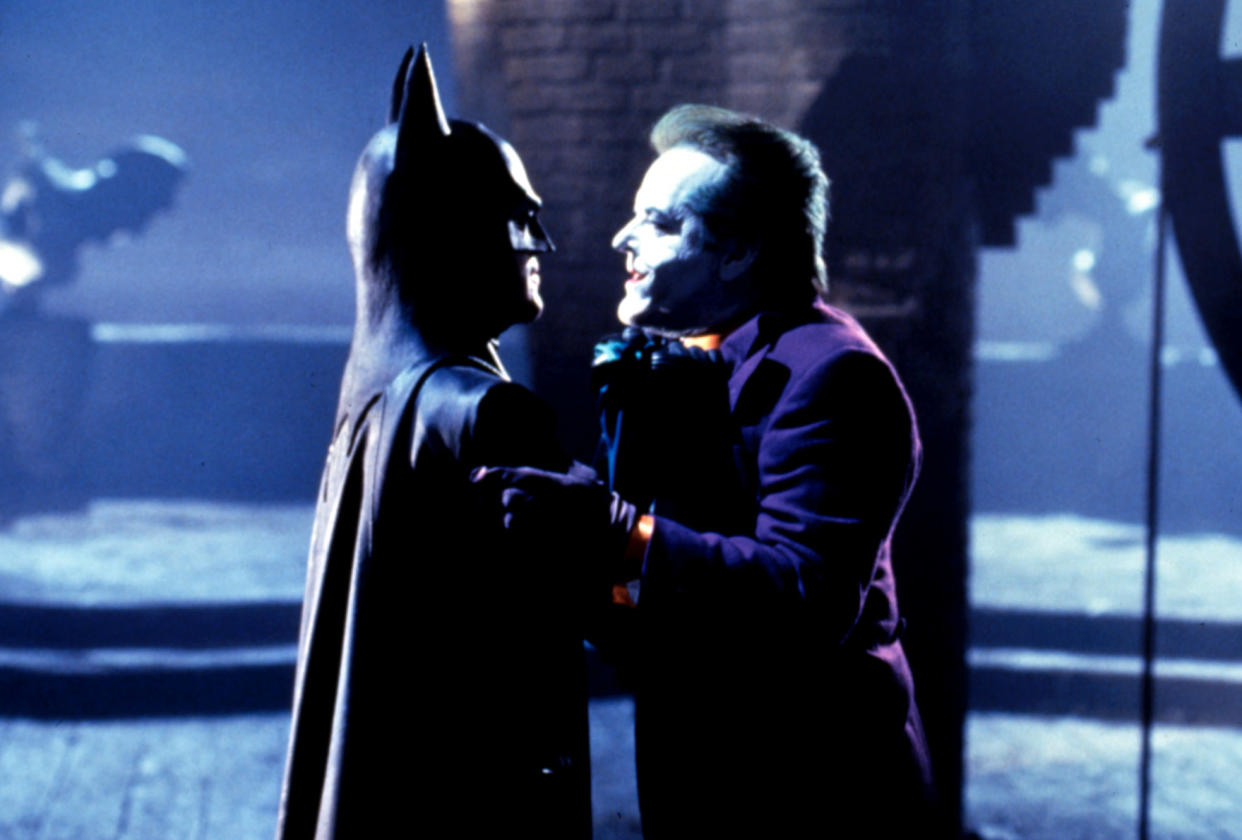
Moviegoers headed into the 1989 summer movie season primed for the return of such box-office champs as Indiana Jones, Riggs and Murtaugh, the original USS Enterprise crew and the Ghostbusters. But as the warm weather gave way to fall, one hero towered above the rest — a hero whose arsenal included a Batsuit, a Batmobile and lots and lots of wonderful Bat-toys. Technically speaking, the DC Comics icon wasn’t a newcomer, either. Prior to his major motion picture’s opening day on June 23, 1989, Batman had been fighting criminals in the comic book pages for 50 years, and had also enjoyed stints in animation, movie serials and a feature film spinoff of his popular, if short-lived 1960s TV show.
Under the direction of Tim Burton, though, audiences met a Caped Crusader (played by Michael Keaton), to say nothing of a Gotham City (designed by Anton Furst), that looked unlike any previous onscreen incarnation. Even three decades later, Batman’s heightened style, which fuses the imagery of illustrators like Neal Adams and Frank Miller with the sensibilities of such filmmakers as Fritz Lang and William Castle, is uniquely transporting. Seen again today, it’s an unapologetically fantastical version of a comic book-inspired cinematic universe at a time when many superhero franchises — including Christopher Nolan’s much-loved Dark Knight trilogy — opt for a more real-world approach. At the same time, it also treats the central character seriously, erasing any hint of ’60s-era camp.
That Burton’s Batman exists at all is something of a miracle. In the wake of Richard Donner’s 1978 blockbuster, Superman: The Movie, a Batman-fronted feature worked its way through the Warner Bros. development pipeline, with early versions offering a more expansive account of who the character was and how he came to be. The project moved in fits and starts even after Burton stepped up to the director’s chair, finally finding new life with a new screenwriter, Sam Hamm, who decided to condense the character’s origin story into two words: “I’m Batman.”
“We wanted to basically jump in where Batman was already established, but not well-known,” the now 63-year-old writer tells Yahoo Entertainment about his classic opening sequence, which features the Dark Knight saving a family from an alleyway robbery that’s not unlike the one that left Bruce Wayne an orphan. “The audience thinks they’re seeing what they remember from the comics as the origin of Batman, but then all of a sudden, Batman shows up! The idea was just to be constantly fighting whatever the audience’s expectations might be. For me, that was the big fun of writing the screenplay — trying not to do it by the numbers.”
But the numbers don’t lie: Batman grossed over $250 million in its original theatrical run, and set home entertainment records as well when it hit VHS just in time for the holiday gift-giving season. Burton and Hamm also set the tone for the wave of comic book movies that swept through theaters in the 1990s, until the dawn of the Marvel Age during the early 2000s. With the movie’s 30th anniversary this weekend, here’s a deep dive into the version of Batman you never saw as it unfolded in Hamm’s original script.
Batman: Week 6

Hamm and Burton may have opted to skip over their hero’s origin story, but make no mistake: The writer’s original conception of the movie could still be described as Batman Begins. “When we meet Bruce Wayne, he’s only in his first six weeks or so of being Batman, and I don’t think he’s decided whether it’s really going to work out or not,” Hamm says about where his script picked up the Dark Knight’s journey. Part of that uncertainty stems from the fact that his childhood emotional trauma is still as fresh as his crimefighting career. “Tim and I decided that this guy is obviously very disturbed. He’s never adjusted, never figured out how to put his trauma behind him the way other people do. He’s got the assets, he’s got the resources and he’s got enough control over his destiny that nobody can really tell him no. So we said to each other, ‘What if you have this [crazy] character and he starts to go sane?’”
According to Hamm, that’s the character arc that sparked Keaton’s imagination as well. Unlike the actors who have since donned the mantle of Bruce Wayne — from Val Kilmer to Ben Affleck — the Beetlejuice star leaned into the idea of Gotham’s most eligible tycoon as a weird recluse. In one of Batman’s best visual gags, and one that Hamm says he can’t take credit for, it’s revealed that Bruce sleeps more soundly when he’s hanging upside down like a bat rather than horizontal in a bed. “I don’t know who came up with that; I think it was an on-set improvisation,” the writer says, chuckling. “But it’s a really nice gag.”
Bruce’s road back to sanity begins when he meets Vicki Vale (Kim Basinger) at the month-and-a-half mark in his crimefighting career and discovers there might be more to life than putting on muscle armor and punching bad guys. “We thought, ’What if he met someone and wonders whether he could have a nice relationship and an ordinary family?’” Hamm says. “He’d never seen the appeal of that before, but suddenly it starts to makes sense to him. At the same time, he’s out in the middle of the streets at night riling up the criminal community, which makes him think, ‘Maybe what I’m doing out here isn’t good.’ From the start, we wanted to treat him as if he were a human being — one who looked at the consequences of what he was doing and asked himself, ‘Is it really worth it?’”
The Joker wasn’t meant to be the Bat-maker
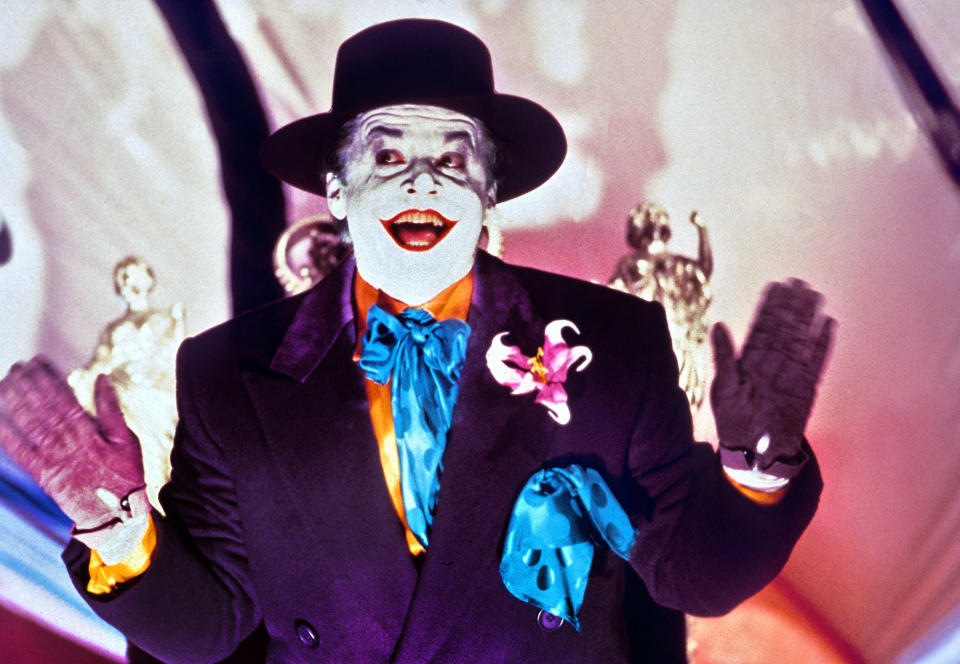
While Hamm opted to skip over Bruce’s transformation into Batman, he did intend to tell one significant origin story: how Gotham gangster Jack Napier (Jack Nicolson) becomes the wild and crazy Clown Prince of Crime. Confronted by the Dark Knight in the middle of a chemical plant burglary, Napier plunges into a vat of greenish sludge and emerges with the Joker’s signature chalk-white face and devilish grin. Bruce doesn’t realize it at the time, but it’s only appropriate that his alter ego is involved in the creation of his greatest nemesis. Many years ago, Napier created Batman by gunning down Thomas and Martha Wayne, leaving their son alone to contemplate an eerie question: “You ever danced with the devil by the pale moonlight?”
Chilling words… but not ones penned by Hamm, who says he fought — and ultimately lost — a battle with Burton about whether or not to ID the Joker as the killer of Batman’s parents. His drafts purposefully omitted that revelation, instead using the Joe Chill character from comic book continuity. But as production on the film began in 1988, a Writers Guild strike prevented Hamm from doing any further work on the script. Warren Skaaren — who previously worked with Burton and Keaton on Beetlejuice — jumped onboard at that point, with Jonathan Gems and Charles McKeown contributing on-set rewrites and at some point in that process, Burton got his preferred Wayne-killer. (Hamm and Skaaren are the only two writers credited in the finished film, with Hamm receiving an additional “Story by” credit.)
“It’s always bugged me,” he admits now. “I think it’s too neat and symmetrical. Here’s a guy who is driven to put on a suit and fight crime; he’s been preparing for 20 years, and suddenly the first guy he runs into is the guy who popped his parents? I’m like, ‘OK, so is his trauma fixed now? Does he feel better?’ I understand it provides a nice closed narrative for this one movie, but I always thought about the characters as being part of a larger continuity.”
At the same time, Hamm didn’t intend — or expect — for Nicholson to be anything more than a one-and-done villain. As in the finished film, his script ended with the Joker battling Batman in the belfry of a towering Gotham City cathedral before nearly escaping on his Joker-copter to fight another day. Just as he’s about to lift off into the heavens, Batman brings him down to Earth (all the way down) by lassoing a gargoyle onto his leg. That cause of death was added during production; Hamm’s vision for Nicholson’s final moments was a bit more… well, batty. “I wanted the movie to end in a belfry — because, let’s face it, it’s Batman — and I had a huge flock of bats come flying out of the rafters,” Hamm says, laughing. “That caused the Joker’s helicopter to go out of control and that’s how he plunged to his death. But they didn’t have the dough for the bat invasion! Thanks to CGI, it would be much cheaper to do a flock of bats now than it was back then.”
Murder in the first
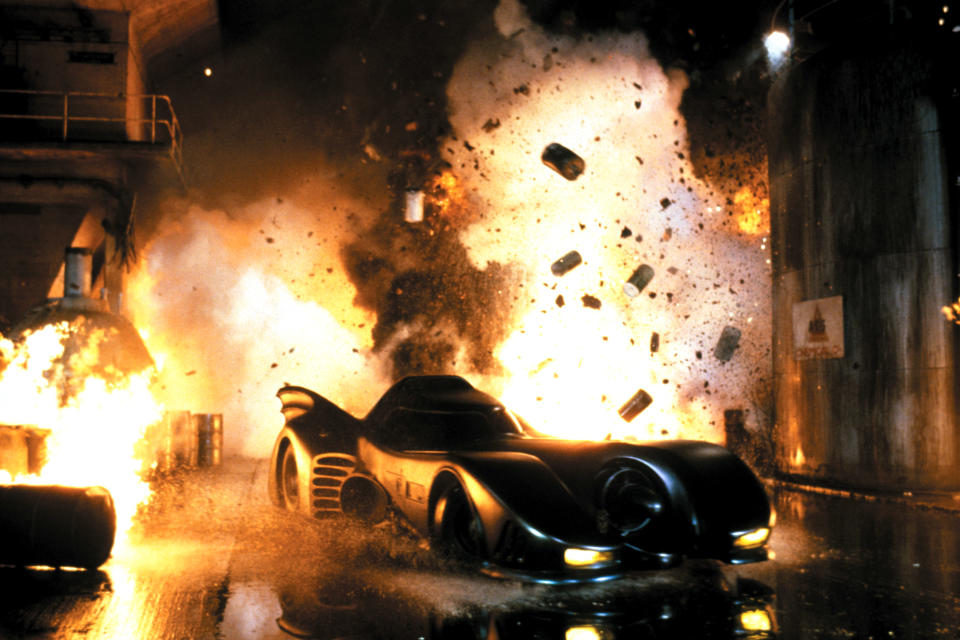
To kill or not to kill? That’s been the question confronting every contemporary comic book movie since Superman snapped General Zod’s neck at the end of Zack Snyder’s Man of Steel. The director knowingly doubled down on killer superheroes with Batman v. Superman: Dawn of Justice, in which Ben Affleck’s Caped Crusader dishes out fatal blows to his opponents without breaking a sweat… or showing any remorse. Snyder’s choice inspired an equally violent reaction within fandom, and subsequent DC movies like Aquaman and Shazam! have tellingly found ways for their heroes to defeat evil without flat-out murdering it.
It’s worth noting that Batfleck isn’t the first big-screen Dark Knight to wittingly shed bad guy blood. (For that matter, Man of Steel defenders will be more than happy to tell you that Christopher Reeve’s Superman didn’t work all that hard to save Terence Stamp’s General Zod.) Hamm’s Batman also racks up the body count; in addition to ending the Joker’s life, Keaton’s Batman kills an entire group of his minions with a Batmobile bomb, and sends other enemy combatants over the edge of the miles-high staircase that leads up to the cathedral belfry. And let’s not forget that Bruce also outfits the Batplane with multiple guns — the same weapon that killed his parents — which has been a longstanding no-no in the pages of the comic book. (On the other hand, he’s also a lousy shot.)
Hamm says that he and Burton arrived at the decision that their Batman would kill — within reason — early on in the writing process, relying on established precedent from the character’s earliest comic appearances. “In early issues of Detective Comics, he used to pack a gun,” the writer notes. “Obviously, he’s not going to be a wholesale killer, but if you’re in a situation where you have to stop an entire city’s worth of people from being killed in the streets, then you respond with reasonable force.”
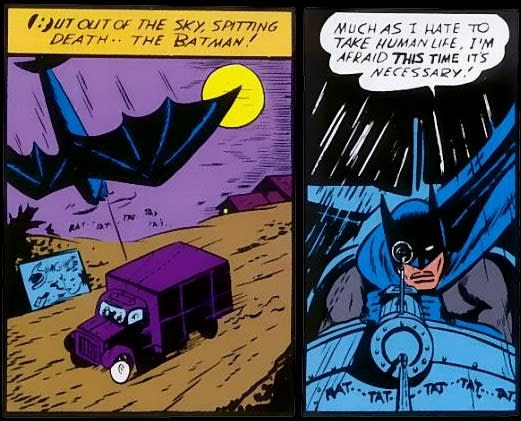
While Hamm never penned a version of the script where Batman doesn’t kill, he understands why large sections of moviegoers don’t like to see their superheroes going around snapping necks. “I had logical trouble with Man of Steel in that I’m not quite sure how he kills General Zod,” he admits. “Either they’re invulnerable or they’re not invulnerable. It’s not like because you’re Kryptonian you’re strong enough to break his neck. And if you have trouble with the morality of it, then the thing to do is to incorporate that into the story. If Superman has done this awful thing in order to save the people of Earth, maybe that becomes part of his ongoing saga. Maybe it’s the moment where he decides, ‘I will never again kill a person.’”
Blundering into a Boy Wonder
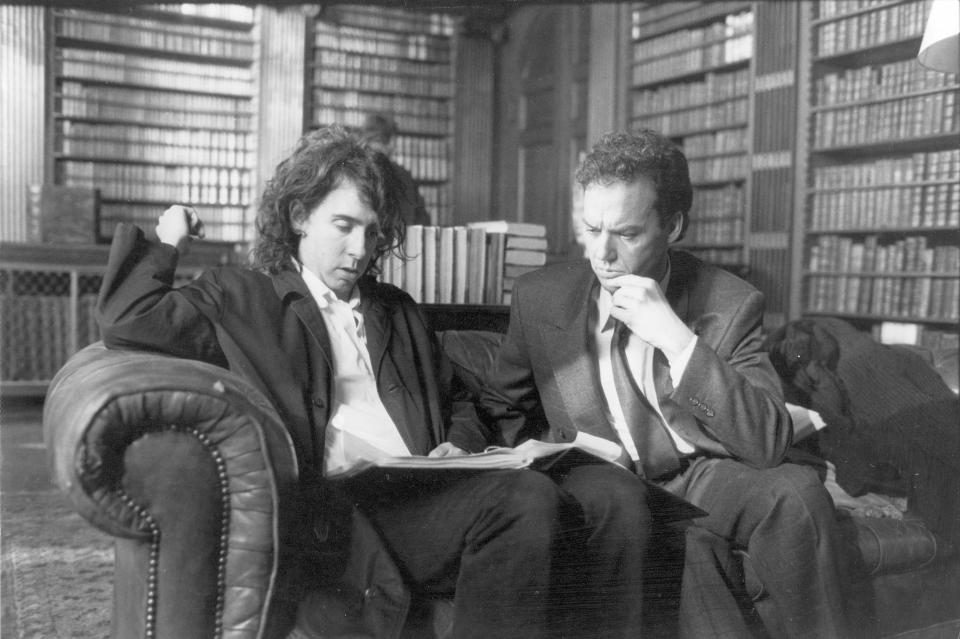
Besides deciding that Batman wasn’t averse to killing bad guys, there was one other conclusion that Burton and Hamm arrived at almost immediately: Batman would be Robin-free. Unfortunately for them, Warner Bros. didn’t agree. The Boy Wonder had been a big part of the screenplays that pre-dated Hamm, and the studio refused to budge from the idea that people were coming to see Batman and Robin… not Batman and nobody. “We kept saying that Robin could be in the sequel, but they told us, ‘No, you have to introduce Robin,’” Hamm remembers. “We knocked our heads together for a long, long time and couldn’t come up with anything.” The eureka moment finally arrived on a Sunday morning just before a scheduled conference call with Warner. “In the five minutes before we were supposed to have that call, we figured out the sequence.”
Their big idea for the Boy Wonder’s introduction can be found among the bonus features included on Batman’s new 4K/Blu-ray set, featuring the actual storyboards drawn at the time accompanied by the voices of Batman: The Animated Series stars Kevin Conroy and Mark Hamill as Batman and the Joker respectively. Robin was intended to be part of a larger action sequence that found Bruce Wayne pursuing his nemesis through Gotham after the Joker visits Vicki at her apartment. While Bruce does a quick change into Batman, the Joker’s van passes by a public park where the husband-and-wife trapeze team the Flying Graysons are performing for the crowd. A flare rockets out of the van, strikes a fireworks truck and the resulting explosion claims the Graysons lives, while their 15-year-old son, Dick, watches in horror. The teen joins Batman in pursuing the Joker, but only succeeds in becoming a boy hostage until his future partner-in-crimefighting saves him.
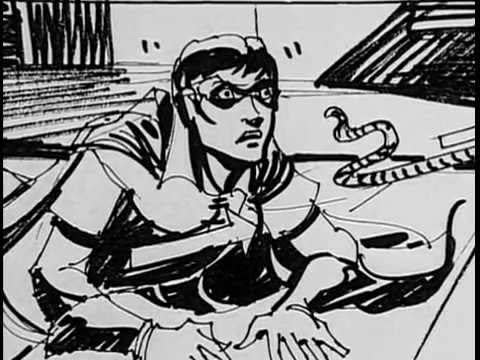
In comic book continuity, the rebellious Jason Todd had inherited Robin’s red-and-yellow outfit from Dick Grayson by the time Hamm started working on Batman, but he wasn’t particularly interested in penning a faithful characterization of either Boy Wonder. (By the time the movie arrived in theaters, Todd was six feet under, and Tim Drake was soon to emerge as the third Robin.) “Our whole idea was to just drop him in the movie, and shove him off to the side as quickly as possible. We figured we’d let the poor bastards stuck with the sequel figure out how to treat him! The main conversation we had was that we had to make him 15 or 16, because if you were taking an 11 or 12-year-old kid out on the streets at night to fight crime, that’s child abuse! Screenwriting is often a matter of incorporating your problems into the storyline and our problem was we didn’t want Robin in our storyline. So we figured out a version where he shows up, and Batman basically doesn’t want to meet him, but there he is.”
Without realizing it, Hamm had also written the perfect way for Robin to be excised from the movie. During pre-production, the studio realized that the Batman/Joker chase would be cost-prohibitive and so the entire sequence — along with Batman’s sidekick — got tossed into the trash bin. “After all that misery, it turned out Robin was too expensive,” Hamm says, chuckling. “And the nice thing is that when the movie came out, hardly anybody said, ‘Where’s Robin?’”
You had one job, Alfred
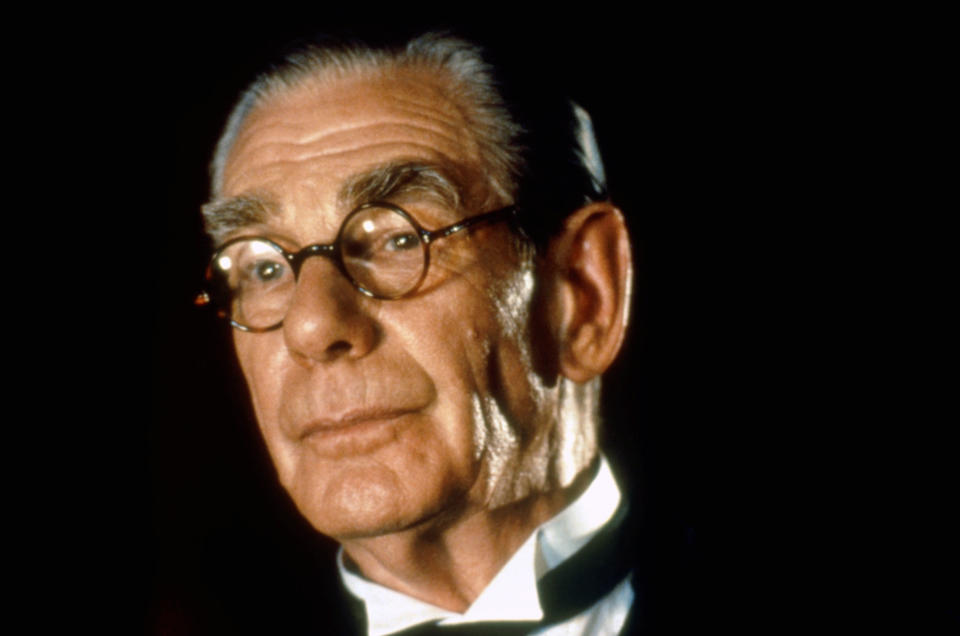
It’s the choice that should have landed Alfred Pennyworth on a one-way trip back to England. The Wayne family’s loyal butler completely violated Bruce’s trust by personally escorting Vicki into the Batcave, blowing his boss’s secret identity. Alfred’s casual betrayal has baffled fans for 30 years, and Hamm is right there with them. “I’ll have you know that I did not write that scene,” he says. “That’s the scene where I would fire Alfred! Bruce would be like, ‘You’ve been like a father to me for 35 years, but your phony ass is fired.’”
Vicki does learn Batman’s actual identity in the Hamm’s script, but it involved some detective work — and a dream sequence — instead of a rogue butler. “It didn’t happen this way for a variety of reasons, but in my script, Vicki was actually the point-of-view character; the one through whom the audience began to unravel the mystery of Batman,” he explains. As in the theatrical version, Vicki partners up with reporter Alexander Knox (Robert Wuhl) and together they unravel pieces of the larger Bat-puzzle at the same time that she’s growing closer to Bruce, who has managed to remain a man of Willy Wonka-esque mystery. Her two worlds collide when Batman rescues her from the Joker’s attack at the Gotham Museum of Art, leading to a street chase during which the Dark Knight is temporarily knocked flat by his counterpart’s henchmen while Vicki watches from a rooftop.
In the film version, the men move to remove Batman’s mask, but are interrupted by the flash of Vale’s camera bulb. In Hamm’s script, they actually see the face beneath the cowl. “That was another moment where I wanted to play with comic book conventions. I wanted to say, ‘OK, they take off the mask — now what?’ And, of course, when they see him, it’s like ‘Who’s he? I’ve never seen him before.’” Their confusion gives Bruce just enough time to go on the offensive, knocking them down and fixing his cowl firmly back over his head.
Vicki missed seeing Bruce’s exposed face, but things snap into place for her during her ride back to the Batcave. “She’s listening to him, watching him and she’s going, ‘I know who this guy is — this is Bruce,’” Hamm says. Sensing another unmasking, Batman deploys a dose of knockout gas. While asleep, though, Vicki’s unconscious mind takes over and pieces together his origin story, starting with the murder of Bruce’s parents in Crime Alley.
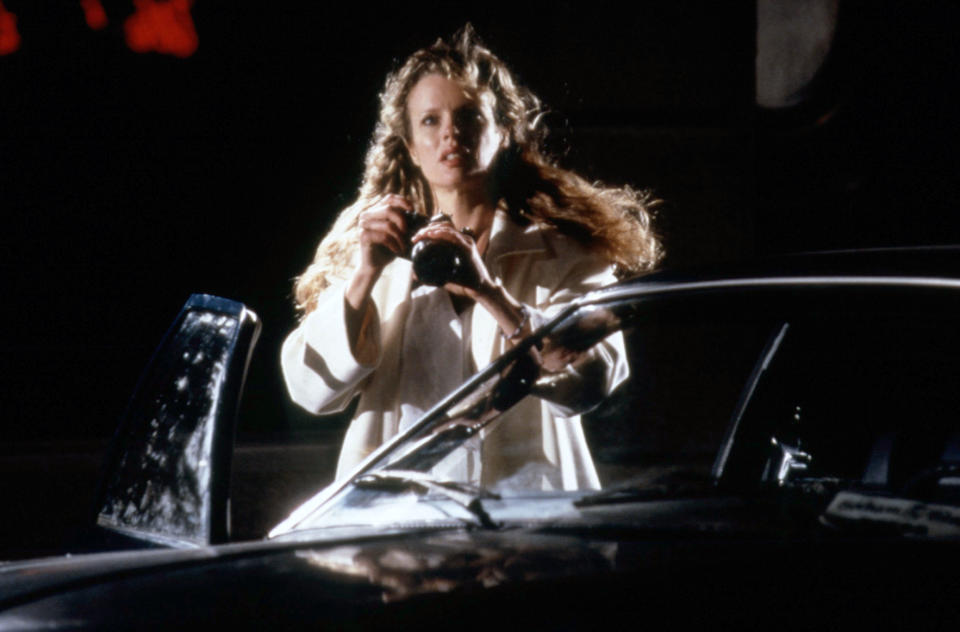
“Joe Chill shoots Pop Wayne and Mom Wayne and the little boy is standing there crying. Then Commissioner Gordon is hugging the boy and a flashbulb goes off, and we do a reverse angle that reveals the person holding the camera is Vicki. She wakes up, the phone is ringing and it’s Bruce. At that moment, she knows it’s him. That gradual reveal was part of her story: Her realization that the guy she’s falling for and the crazy vigilante she’s been tracking are actually the same guy.”
Batman is available on 4K Ultra HD from Amazon and Walmart. It can also be rented or purchased from Amazon, iTunes and Vudu.
Read more from Yahoo Entertainment:

